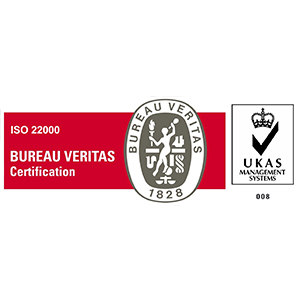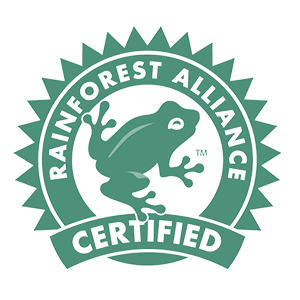Play Video
The Bush to Cup Process
Step 1 - Plucking
The greenleaf is carefully plucked targeting 2 leaves and a bud and transported in specially designed trucks to the factory.
Step 2 - Withering
This is a process of reducing the moisture content of the leaf before processing by using forced draught.
Step 3 - CTC (Cut Tear and Curl)
This involves maceration of the leaf into small particles which allows free access of oxygen.
Step 4 - Fermenting
The macerated leaf is spread on a Continuous fermenting unit under controlled temperature, relative humidity and airflows to allow chemical reactions which makes the dhool to acquire a coppery brown colour and rich in flavor and aroma.
Step 5 - Drying
This process involves exposing the tea to a flow of hot air. This gives it the black colour and reduces the moisture content for proper storage.
Step 6 - Sorting
This is the grading process depending on the particle size and type.
Step 7a - Packing
The tea is packed as per the grade in papersacks for the auction market.
Step 7b - Packing
The packing for the local market is done in sachets and packets after further value addition.
Previous slide
Next slide
Step 1 - Plucking
The greenleaf is carefully plucked; targeting the two top leaves and a bud as they store the flavour and character of the tea. The leaves are then selected, weighed and put into aerated bags made of polypropylene, sisal or jute ready for transportation. Within a few hours of plucking, the green leaves are transported to the factory for processing in specially designed trucks, which have racks on which tea sacks are neatly arranged.
Step 2 - Withering
This is a process of reducing the moisture content of the leaf before processing by using forced draught. The leaf is thinly spread onto a withering trough, which has a perforated bed with a plenum chamber through which fresh air is blown into the leaves for 14 to 18 hours in order to wither them to about 70% moisture content.
Step 3 - Fermentation
The macerated leaf dhool is spread on a continuous oxidation unit under carefully controlled temperature, relative humidity and airflows to allow chemical reactions. At this stage the green dhool changes to a coppery brown colour, while different aromas are released as a result of the complex intrinsic chemical reactions taking place along the modern state-of-the art double-stream continuous oxidation unit. This process is also known as fermentation.
Step 4 - Drying
The fully oxidized tea then undergoes a drying process in a fluid bed dryer (FBD) after about two hours of oxidation where it is subjected to temperatures of 140-150 0C to dry. Here the dhool loses its coppery brown colour to produce the black tea.
Step 5 - Sorting
The black tea is sorted into broken, pekoes, fanning or dusts grades according to particle size and fibre content.
Step 6a - Packing
The tea is immediately weighed and stored in hermetically sealed bulk storage bins that prevent ingress of moisture or contamination. Packing into airtight multi-lined sacks takes place under hygienic conditions that ensure quality is preserved. The tea is packed as per the grade in paper sacks for the auction market.
Step 6b - Packing
The packing for the local market is hygienically done in sachets and packets after further value addition.
Previous slide
Next slide
Our tea processing chain has been certified against ISO 22000:2018 Food Safety Management Standard. This guarantees the consumer on the quality and safety of our products.

ISO 22000:2018



